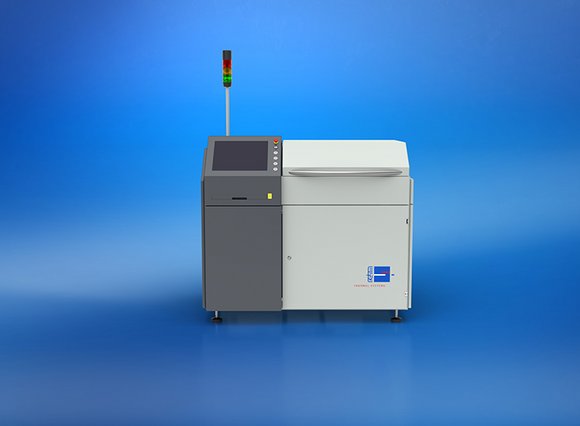A major benefit of the Nexus contact soldering system is that the heating or cooling gradient can be predefined based on predetermined parameters. The gradients can be preset as required. Within these specification limits, the temperature is adjusted automatically by the Nexus to ensure these limit values are not exceeded. This rules out any possible malfunction of the assembly to be soldered. The heating output of the Nexus has been designed for a uniform heating process when fully loaded with high-mass assemblies, meaning that short cycle times are also no problem. Sensor components determine and verify the temperatures recorded on the goods carrier support.
Reliable vacuum processes for improved quality
Vacuum soldering achieves productivity increases and quality advantages in the manufacturing of power electronics. In this way, the vacuum ensures oxide-free processes, as well as improved wetting and thus better filling of soldered joints. In addition, the vacuum drastically reduces the voids in soldered joints and enables processes such as plasma cleaning and atmosphere exchange in advanced packaging. The reduced pressure helps, among other things, to minimise oxidation on the components and on the joints themselves. The heat is transferred both via thermal conduction and optionally by radiation. Its compact dimensions and high user-friendliness make the Nexus particularly suitable for use in small-scale and medium-scale production, as well as in laboratories.
Inert gases and forming gas
Nitrogen (N2) is typically used to protect against oxidation. In combination with 5 % hydrogen, the forming gas is also used for reducing oxides; no special safeguards are necessary within this mixing ratio. Forming gases with a hydrogen content from 5 % to 100 % need necessarily appropriate safeguards and are used only at 280 °C or higher. Depending on the process temperature, the use of formic acid can be beneficial. For a stable, reliable, flux-free soldering process, the inert carrier gas (N2) is enriched with formic acid (HCOOH) and routed into the process chamber.
You can find more information about the Nexus contact soldering system here.
